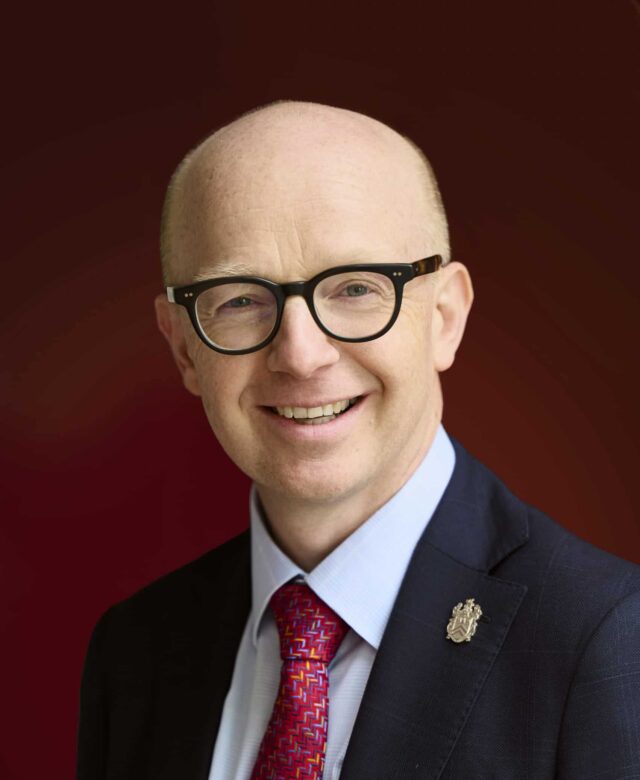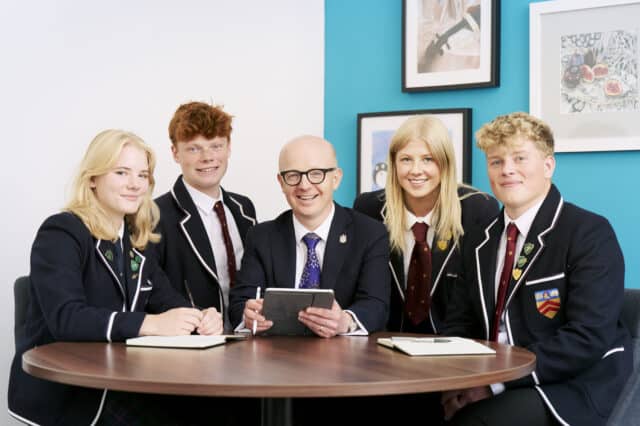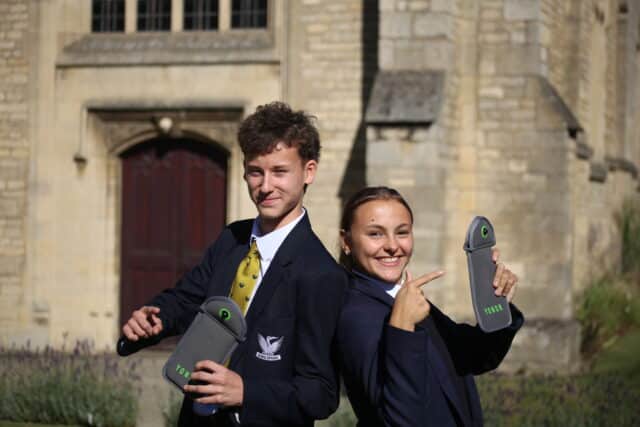Blog
A Fresh Approach to Mobile Phones: Striking the Right Digital Balance at Morrison’s Academy

Andrew McGarva
Rector, Morrison’s Academy
Read the blog
As technology continues to shape every aspect of our lives, the role of mobile phones in education, and in life, is becoming an increasingly complex issue.
Nearly 97% of children own a mobile phone by the age of 12
While these devices can be invaluable tools for learning and communication, there’s growing concern over their impact on mental health, education, and overall well-being. Studies have shown that excessive phone use can lead to issues such as distraction, decreased focus, increased anxiety, and online bullying. At Morrison’s Academy, we’ve been closely monitoring these developments, and after much reflection, we’ve decided to take a new approach to mobile phone use within our school community.
We recognise the tremendous benefits that mobile phones offer in the modern world—whether for learning, staying connected, or even for entertainment. However, we also believe that it’s essential to manage these devices in a way that maximises their positive impact while minimising the negative consequences.
That’s why, at the start of the 2024 academic year, we introduced a new mobile-free policy for our students in S1-S5. This decision is based on extensive research and a deep understanding of the digital challenges facing young people today.
From the outset, our goal was clear: to strike the right balance between embracing the digital world and protecting our students from the harmful effects of overuse. We wanted to create an environment that promotes focus, learning, and healthy social interaction while still acknowledging that mobile phones are an unavoidable part of modern life.
As part of this new approach, we have introduced a mobile-free campus for students in S1-S5. All mobile phones and smartwatches must be switched off and stored out of sight before students enter the school gates. Any devices seen by staff during the school day are collected, logged, and returned at the end of the day. This policy also extends to headphones and AirPods, which should not be worn or visible during school hours.
We felt it was important to go further than simply limiting phone use in classrooms. To create a truly phone-free environment, students attending co-curricular activities after school must also switch off their phones and keep them in their bags or pockets. This ensures that their attention remains focused on the activity they are engaged in, whether it’s sports, drama, music, or a club.
For our senior students in S6, the rules are slightly different. They are allowed to use their phones in designated areas, but they are also expected to set a positive example for younger students. We believe that seniors should act as role models in this digital age, and part of this responsibility is demonstrating how to use technology in a balanced and responsible way. Of course, students who need their phones for medical reasons are permitted to use them, but only for those specific purposes.

Morrison’s Academy, Crieff, Sept 23, © Malcolm Cochrane Photography, 07971 835 065, [email protected], No syndication, No reproduction without permission
Though it’s still early in the school year, the results of this new policy have already been very promising. We have a strong co-curricular provision which has always involved the majority of students at lunches and after school but for those not involved in activities I have seen a positive difference in interactions. We have also seen an increase in the number of students signing up for activities. The ‘doom scroll’ of social media is not happening and students have shared that they feel a greater sense of freedom and are being more present with their friends and teachers when travelling around the school, without the constant pull of their phones. Social interactions are in person and not via a device.
Additionally, the policy has significantly reduced the anxiety that many students feel about keeping up with social media trends or staying constantly “in the loop.” By removing this pressure, we’ve given them the freedom to be themselves during school hours—without worrying about missing out on virtual conversations or updates. This sense of freedom has contributed to a more relaxed, focused, and enjoyable school day for many.
Inappropriate mobile phone usage had not been a serious issue for the school but I and my colleagues had observed more and more students checking phones between lessons and during breaks and lunch. I had even noticed my own habits becoming quite negative and my weekly report of phone use was increasing – I was not able to establish a focused workflow and was learning poor habits of my own.
While we certainly considered the option of a full mobile phone ban or using locking pouches, we ultimately decided against these more restrictive approaches. Children can find many ways to circumnavigate systems and I heard from some fellow heads where their students had spare phones or carried magnets to unlock pouches. We were concerned that such measures might inadvertently foster a culture of secrecy or encourage students to find ways to bypass the rules. Instead, we chose to focus on developing our culture of trust.
By educating students about the potential dangers of mobile phone overuse, we aim to help them develop the skills of self-regulation and responsible use. We want our students to understand the importance of balance—of knowing when to disconnect and when to engage with the digital world. Rather than simply imposing strict limits, we are working to create a shared understanding of why these boundaries are necessary and how they contribute to the well-being of everyone in the school community.
This shift in focus from regulation to education is central to our approach. We want students to leave Morrison’s Academy not only academically prepared but also equipped with the tools to navigate the complexities of the digital age. By helping them build healthy habits around mobile phone use, we are preparing them for the challenges they will face in adult life.
From the very beginning, we involved our entire school community in the conversation about this policy. We presented the research on mobile phone use to staff, students, and parents, ensuring that everyone understood the rationale behind the change. It was crucial that we received buy-in from all stakeholders, as this would ultimately determine the success of the policy.
The response has been overwhelmingly positive. Students, in particular, have expressed appreciation for the sense of freedom they now experience without the constant pressure of digital connectivity. They’ve also told us that they feel more socially connected with their peers, as they can now focus on face-to-face interactions rather than on their screens.
Parents, too, have expressed support, particularly in light of the growing concerns around the impact of social media on young people’s mental health. We’ve also made it clear that this policy is not about rejecting technology altogether, but about encouraging responsible use.
The feedback we’ve received so far suggests that this approach is working. Students are more focused, more engaged, and more connected with each other in meaningful ways. We’re hopeful that this will continue to be the case as the school year progresses. Our next step is to engage more fully with our parental body to support our families in their relationship with technology, aiming to help them and their children with the use of smartphones outside of school.
Ultimately, we believe that true leadership in education isn’t about embracing technology blindly or rejecting it outright—it’s about creating environments where students can thrive academically, socially, and emotionally. By fostering a healthy balance between the digital and physical worlds, we’re giving our students the best chance to succeed both in school and in life.

Morrison’s Academy, Crieff, Speech Day, June 2024, © Malcolm Cochrane Photography, 07971 835 065, [email protected], No syndication, No reproduction without permission


